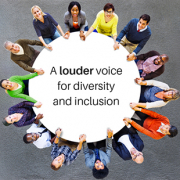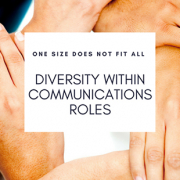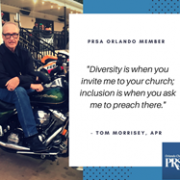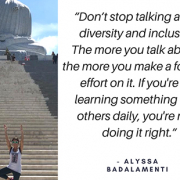Things to consider when recruiting PR talent from diverse backgrounds
By Tyrone Law, PRSA Diversity & Inclusion Committee Member
Not long ago, in an effort to elevate my career to the next level, I shifted into “job search mode” and my quest to step into a new public relations role began. After several interviews, I began to more deeply contemplate the notion that I’d only be willing to take my PR talents to an organization that embraced diversity in a dynamic way—a company whose senior leadership truly reflected diversity and inclusion.
According to a recent survey by Glassdoor, 67% of job seekers say that when evaluating companies and job offers, it is important to them that the company has a diverse workforce, and when it comes to leadership diversity, the survey showed that two in five people do not think their company has a diverse executive team. According to the Bureau of Labor Statistics, the ethnic makeup of the PR industry in the U.S. is 78% Caucasian, 17% Hispanic American, 13% African-American and 6% Asian-American.
In 2019, it’s easier than ever for jobseekers to log into sites like LinkedIn and Facebook to absorb firsthand what a company’s current workforce looks like. Future talent also can effortlessly see right through companies or organizations that merely go through the “diversity and inclusion checkbox” while failing to staff a truly diverse workforce or leadership team. You know those companies that claim they “champion diversity and inclusion” because it’s all over their website, but show very little concrete evidence in support of that statement.
Staffing your top-level PR positions with a diverse mix of talent representing a multitude of different cultures, disciplines, ideals, gender, disabilities and sexual orientations, fosters campaigns that truly reflect the society in which we live. Unique perspective is invaluable. A study from global management firm Boston Consulting Group found that “increasing the diversity of leadership teams leads to more and better innovation and improved financial performance.”
Get out of your comfort zone and engage diverse communities
Collaborating with local organizations that support communities underrepresented in the PR industry, recruiting talent from Historically Black Colleges and Universities and networking with organizations made up of professionals with disabilities are great examples of ways companies can step out of their typical recruiting tactics and engage talent in new communities.
The PR industry certainly isn’t the worst industry in its diversity and inclusion efforts, but there are still many strides that must be made towards representation and inclusion. Recruiting diverse PR talent isn’t just a matter of morality, it affects a company’s bottom-line and evolves with the changing demographics of our audiences.











